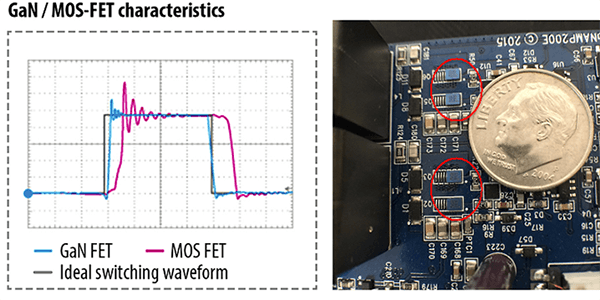- Μηνύματα
- 2.274
- Reaction score
- 968
Class D
Mεταξύ των παραδοσιακών προβλημάτων είναι ο παρατηρούμενος υψίσυχνος θόρυβος (hiss) , καθώς και οι υψηλότερης περιττής τάξης παραμορφώσεις (μη γραμμικότητες), λόγω της εφαρμοζόμενης διαμόρφωσης PWM, αλλά και του εισαγόμενου νεκρού χρόνου (dead time) των διακοπτών MOSFET, τεχνική που εφαρμόζεται για την αντιμετώπιση του ρεύματος βραχυκύκλωσης (shoot-through current). Άλλες πηγές παραμόρφωσης είναι το μη ακριβές ταίριασμα του χρόνου ανόδου και καθόδου των παλμών εξόδου, ο μη ακριβής χρονισμός των κυκλωμάτων οδήγησης πύλης των ενισχυτικών στοιχείων εξόδου, καθώς επίσης η μη γραμμικότητα του παθητικού φίλτρου εξόδου LC.
Εδώ, έρχεται η κατάλληλη εφαρμογή αρνητικής ανάδρασης, μέσω βρόχου υψηλού κέρδους, για την καταπολέμηση του θορύβου και της αρμονικής παραμόρφωσης. Όμως, η εφαρμογή πολύ μεγάλου ποσοστού αρνητικής ανάδρασης μπορεί να εισάγει παραμόρφωση μεταβατικών (TIM), αντιληπτή ως σκληρότητα που καλύπτει τις λεπτομέρειες του σήματος. Το φαινόμενο είναι ιδιαίτερα έντονο όταν χρησιμοποιούνται διακοπτικά ενισχυτικά στοιχεία MOSFET πυριτίου (με σχετικά υψηλότερη ωμική αντίσταση σε κατάσταση αγωγής και πολύ υψηλό φορτίο αποθήκευσης).
Πρόσφατα, έχει αρχίσει η υιοθέτηση των νεότερων ενισχυτικών στοιχείων FET νιτριδίου του γαλλίου, ειδικότερα της κατηγορίας Enhancement mode HEMT Gallium-Nitride-on-silicon (eGaN). Αυτά, φαίνεται να επιτυγχάνεουν πολύ χαμηλότερες απώλειες και ανώτερες επιδόσεις αρμονικής παραμόρφωσης, εφαρμόζοντας ηπιότερη αρνητική ανάδραση και υψηλότερη διακοπτική συχνότητα με πολύ σύντομο νεκρό χρόνο (dead time).
Ποιες εταιρείες διαθέτουν σήμερα προϊόντα με eGaN FET, αντί των παραδοσιακών MOSFET?

Η οποιαδήποτε απόκλιση του διακοπτικού παλμού από την ιδανική τετραγωνική μορφή, αυξάνει την παραμόρφωση, τις απώλειες ισχύος, τον κωδωνισμό των παλμών και τις παρεμβολές EMI.
Mεταξύ των παραδοσιακών προβλημάτων είναι ο παρατηρούμενος υψίσυχνος θόρυβος (hiss) , καθώς και οι υψηλότερης περιττής τάξης παραμορφώσεις (μη γραμμικότητες), λόγω της εφαρμοζόμενης διαμόρφωσης PWM, αλλά και του εισαγόμενου νεκρού χρόνου (dead time) των διακοπτών MOSFET, τεχνική που εφαρμόζεται για την αντιμετώπιση του ρεύματος βραχυκύκλωσης (shoot-through current). Άλλες πηγές παραμόρφωσης είναι το μη ακριβές ταίριασμα του χρόνου ανόδου και καθόδου των παλμών εξόδου, ο μη ακριβής χρονισμός των κυκλωμάτων οδήγησης πύλης των ενισχυτικών στοιχείων εξόδου, καθώς επίσης η μη γραμμικότητα του παθητικού φίλτρου εξόδου LC.
Εδώ, έρχεται η κατάλληλη εφαρμογή αρνητικής ανάδρασης, μέσω βρόχου υψηλού κέρδους, για την καταπολέμηση του θορύβου και της αρμονικής παραμόρφωσης. Όμως, η εφαρμογή πολύ μεγάλου ποσοστού αρνητικής ανάδρασης μπορεί να εισάγει παραμόρφωση μεταβατικών (TIM), αντιληπτή ως σκληρότητα που καλύπτει τις λεπτομέρειες του σήματος. Το φαινόμενο είναι ιδιαίτερα έντονο όταν χρησιμοποιούνται διακοπτικά ενισχυτικά στοιχεία MOSFET πυριτίου (με σχετικά υψηλότερη ωμική αντίσταση σε κατάσταση αγωγής και πολύ υψηλό φορτίο αποθήκευσης).
Πρόσφατα, έχει αρχίσει η υιοθέτηση των νεότερων ενισχυτικών στοιχείων FET νιτριδίου του γαλλίου, ειδικότερα της κατηγορίας Enhancement mode HEMT Gallium-Nitride-on-silicon (eGaN). Αυτά, φαίνεται να επιτυγχάνεουν πολύ χαμηλότερες απώλειες και ανώτερες επιδόσεις αρμονικής παραμόρφωσης, εφαρμόζοντας ηπιότερη αρνητική ανάδραση και υψηλότερη διακοπτική συχνότητα με πολύ σύντομο νεκρό χρόνο (dead time).
Ποιες εταιρείες διαθέτουν σήμερα προϊόντα με eGaN FET, αντί των παραδοσιακών MOSFET?

Η οποιαδήποτε απόκλιση του διακοπτικού παλμού από την ιδανική τετραγωνική μορφή, αυξάνει την παραμόρφωση, τις απώλειες ισχύος, τον κωδωνισμό των παλμών και τις παρεμβολές EMI.
